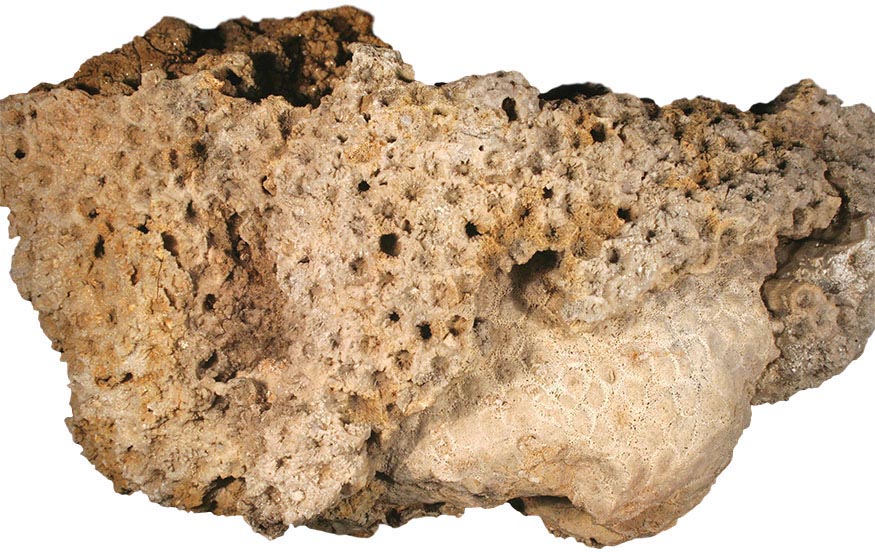
Petoskey stone is a perennial favorite in Michigan, and it is seen in collections and museums all over the world. Undoubtedly Michigan’s most famous fossil, and certainly one of the United States’ as well, the popularity of Petoskey stone is a testament not only to the charm of its enigmatic patterns, but also to how easy it is to find, collect, and polish. But now when you find your own specimen, you can also appreciate something else: the 400 million years that have passed since its tiny little polyps dutifully began building the coral reef they called home.
Petoskey stone is a relic from a critical period for life on Earth and helped form the backbone of the ancient seas: the reefs that harbored life and protected our planet’s early animals. While percarinata and the other Hexagonaria species were ultimately unable to withstand the trials of time, they did thrive for approximately 57 million years and were a successful group of species by any definition. But within their hexagonal patterns and layered structures is also an opportunity to better understand the challenges our oceans have faced and continue to struggle with today. Corals, then and now, are an indicator of the health of our waters, and as coral bleaching spreads through our modern reefs we must be wary; the events of the Late Devonian extinction may be in the distant past, but nothing precludes them from occurring again.
Discovering any fossil is an exciting experience, but if you know the history behind it, collecting can be even more enjoyable. This is something that many Michiganders and visitors to the Petoskey area have long understood, and it’s something that will likely persist in the future as well.

This Petoskey stone shows large overgrowths of coarsely crystallized calcite that mimic the hexagonal structure.

Specimen courtesy of Alex Fagotti